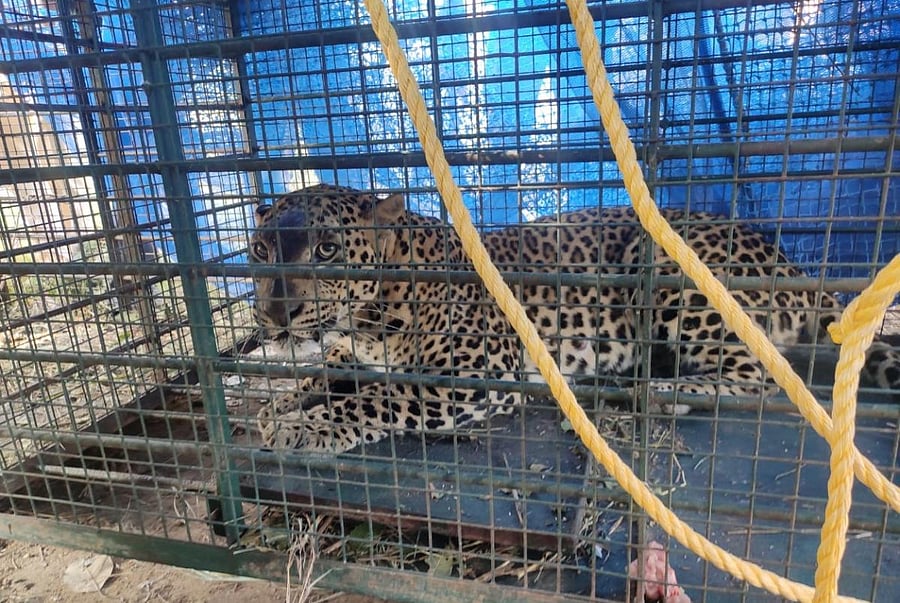
A leopard was recently spotted near an apartment complex on Bannerghatta Road. The CCTV camera caught the big cat sneaking into the Prestige Song apartment building for the second night in a row.
This is no surprise because the city is surrounded by rich biodiversity hotspots, and springing up of population in urban areas leads to encroachment of the surrounding forest lands, which eventually leads to human-wildlife conflict.
The official figures from the forest department suggest that in Karnataka alone, over 1.05 Lakh hectares of forest land was under encroachment till December 2019. Karnataka constitutes more than one-third of total human-wildlife conflicts in the country.
Metrolife spoke to a cross-section of experts and wildlife enthusiasts to understand why the recurrence of animals straying into urban spaces.
Simhadri MN, founder of Swift Wildlife Action Team, says “This city is surrounded by the greenest environment. Towards the south of the city we have Bannerghatta, and deep south-east and south-west we have Turahalli. We have forests in Hosur, and we have sandalwood reserves around too. These areas are rich in wildlife and the wild species have lived here since forever. There are areas within urban limits like Bengaluru University, Gandhi Krishi Vigyana Kendra, outskirts of HAL, where human-wildlife conflict has been happening for a very long time,” says Simhadri. “Speaking of the recent incident that happened near Bannerghatta, that particular leopard used to reside there for many years. Due to encroachment and development activities, and due to more movement of people in that area it has come into the limelight now,” he added.
“Also, it is the nature of wildlife to adapt to changes. What we saw recently was nothing abnormal but an animal just adapting to its surroundings. Apex predators look for easy preys. Street dogs, flightless birds, rodents, etc. are easy to find near human settlements,” says Simhadri.
According to him, the State government has recognised all the reserves and they do not allow any development activities inside these areas, however, near the boundary areas of these reserves some layouts are coming up. There is another issue of SEZ (Special Economic Zone) policy that is going on near Bannerghatta which proposes to reduce the environment-sensitive zone and extend the economic zone. The reason is the availability of granite in the surrounding areas. The State government restricted the reduction of the environment-sensitive zone, but Union Minister Prakash Javadekar’s committee of the Central government approved of it. “It is because of such decisions that the conflict between humans and wildlife have increased,” he added.
“The government does take some actions though, like giving compensation to people. For example, if animals have done some crop raiding, the officials go to the spot for an inspection to see if the claim is valid, and accordingly, they compensate people. In case of loss of life also indemnity is given, not just by the government but there are also NGOs who volunteer,” says Sugandhi who works as a wildlife filmmaker.
Abundant biodiversity hotspots
In a rapidly developing country like India which has abundant biodiversity hotspots, human-wildlife conflicts are inevitable. According to the ministry of urban and housing affairs, the growth rate of population in urban areas across India is 31.8%. In the 2011 census, it was recorded that the number of million-plus cities in India increased from 35 to 53, and the number is expected to cross the mark of 70 in 2021 census. Metropolitan cities like Bengaluru and Mumbai have crossed their saturation levels of development more than a decade ago. Setting up more industries and attracting more crowds to these megacities comes at the cost of imbalance in the ecosystem. Due to the saturation of Bengaluru, previous and current State governments have promised to impose restrictions on further industrial activities in the city by incentivising industries to shift to Tier-II cities, however, hardly any solid action has been taken to facilitate this promise.
